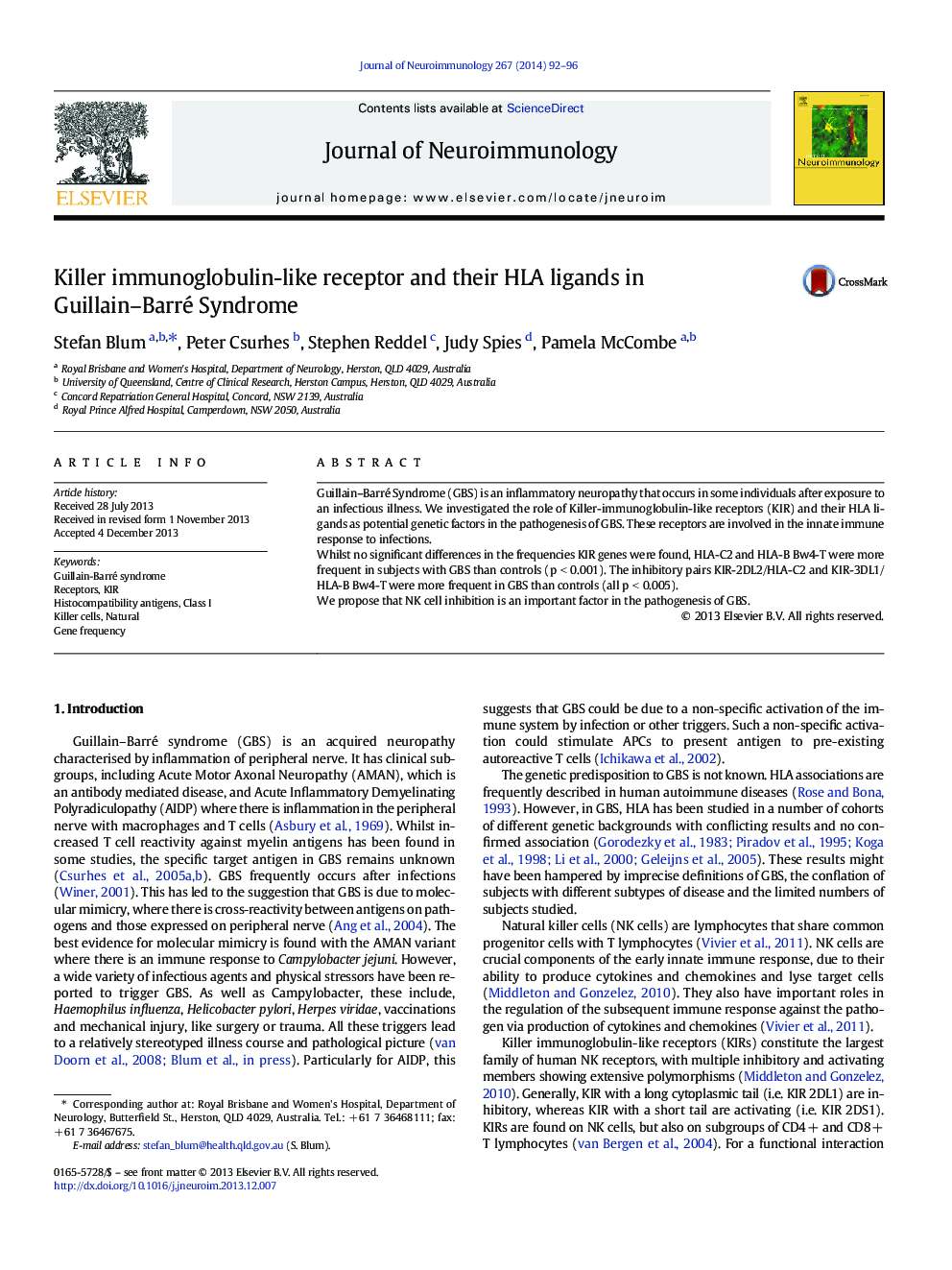| Article ID | Journal | Published Year | Pages | File Type |
|---|---|---|---|---|
| 3064192 | Journal of Neuroimmunology | 2014 | 5 Pages |
•Guillain Barre Syndrome (GBS) is a post-infectious inflammatory neuropathy.•Killer-immunoglobulinlike receptors and their HLA ligands are important in NK cell regulation.•Inhibitory KIR/HLA pairs were found more frequently in subjects with GBS than healthy controls.•We propose that functional NK cell inhibition is an important factor in the pathogenesis of GBS.
Guillain–Barré Syndrome (GBS) is an inflammatory neuropathy that occurs in some individuals after exposure to an infectious illness. We investigated the role of Killer-immunoglobulin-like receptors (KIR) and their HLA ligands as potential genetic factors in the pathogenesis of GBS. These receptors are involved in the innate immune response to infections.Whilst no significant differences in the frequencies KIR genes were found, HLA-C2 and HLA-B Bw4-T were more frequent in subjects with GBS than controls (p < 0.001). The inhibitory pairs KIR-2DL2/HLA-C2 and KIR-3DL1/HLA-B Bw4-T were more frequent in GBS than controls (all p < 0.005).We propose that NK cell inhibition is an important factor in the pathogenesis of GBS.
